'Timeless and everlasting': More young people going for gold jewellery
Gen Z and millennial appetite for gold bling has been bubbling here even amid record-smashing gold prices .
She used to think gold jewellery was old-fashioned, too yellow and culturally loaded for casual wear.
But in July, 25-year-old Phoebe Lye walked into one of Chinese jewellery giant Chow Tai Fook's Singapore stores for two 999 gold charms ($190 each). That is the purest grade of the precious metal, unblunted and ingot-like in hue.
Could granny gold be getting new legs? If that rising bellwether, Chinese entertainment, is anything to go by, it is.
Ms Lye took her cue from viral Chinese drama series The First Frost (2025), filmed in Chongqing, in which the female lead gifts a Chow Tai Fook bracelet to her boyfriend.
The local Gen Z entrepreneur decided to do the same. She went for matching barrel-shaped gold charms, of a slight 0.52g gold content each, on braided cords - pink for her, black for him.
It was her first gold purchase after years of shopping fashion jewellery. She says: "I wanted it to be something we could keep forever. Gold felt perfect because it's timeless and everlasting."
She is hardly an outlier. Gen Z and millennial appetite for gold bling has been bubbling here in the post-pandemic years, even as record-smashing gold prices sap global demand.
According to reports from the World Gold Council, 25- to 35-year-olds were top spenders in China in 2021, accounting for an estimated 75 per cent of consumption. In 2024, that cooled to roughly one third for those aged 18 to 34.
But here, local retailers playing in the middle leagues - between fast-fashion names like Lovisa and luxury brands like Cartier and Van Cleef & Arpels - report a quiet but dogged incline.
Singapore Jewellers Association (SJA) president Ho Nai Chuen tells The Straits Times interest from under-35s in gold jewellery jumped 20 to 30 per cent in recent years, spurred by effective marketing and growing awareness of gold's value as its stock soars.
They are a different breed from the older generation, who tend to shell out for heavier gold, says Mr Ho. All the better to keep stashed under pillows for posterity.
The young approach it not so much as asset, but accessory. "They want to wear it, to be seen by their friends," he adds.
So, they go for lightweight charms, pendants, dainty necklaces and bracelets. Nothing chunky, says the association head. Heftier gold is naturally more costly.
Prices are determined by gold content, measured by the gram and updated live following the global market value known as the spot price.
This taste for the delicate is an unlikely consolation in a jewellery market inhibited by gold prices that have more than doubled in the last five years, says Mr Ho. Modern technology can make these lighter goods by hardening "flimsy" pieces of gold that would otherwise be too fragile for use.
Speaking for the industry, he adds: "With that countermeasure, we can fit the budget of younger consumers, so they can still buy something."
There is a bright edge to the eye-watering gold prices, which in April reached a new high of US$3,500 (S$4,480) an ounce - up from US$2,160 in 2024.
The surge has made yellow gold more seductive to young buyers, decades after the rich hue was pushed over the hill by white gold in the late 1990s, says Mr Ho.
"You can see yellow is coming back. Because of the gold price, people start realising that gold jewellery and yellow gold is something that can appreciate."
The shift cuts across price ranges. Affordable home-grown brand J&Co Jewellery's best-selling 14K gold range offers white and yellow gold. Co-founder Jenny Kwang says she thought white would sell better, as her demi-fine silver jewellery beats the gold, but "it turned out to be 50-50".
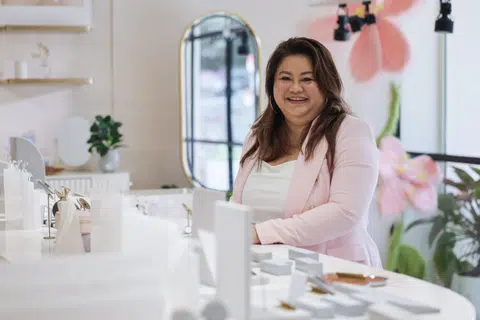
Otherwise, little unites the broad middle of jewellers here, who trade in anything from vermeil - a premium kind of gold plating, with a sterling silver base - to accessible 9K or 14K gold, to the 18K, 22K and 24K realm of fine jewellery. Finer pieces can crack five-figure price tags, with the cost of workmanship stacked on.
Still, even at different corners of the market, retailers new and old have their sights on a new generation of magpies.
Heritage hustlers
Legacy names On Cheong, one year shy of 90 years old, and Poh Heng, established in 1948, are not sitting this race out.
Both have successfully grown their share of the pie, with under-35s making up 20 to 25 per cent of their total customer base, representatives tell ST. A good many are drawn in by their mothers and grandmothers.
On Cheong, with its long-standing South Bridge Road flagship, has been on the offensive with its designs since around 2017, when it began courting younger buyers in earnest.
The first step was Marie Kondo-ing its logo, doing away with everything but the brand name. Then, introducing internal design competitions, says SJA's Mr Ho, who is also On Cheong's managing director.
Each of its seven in-house designers submit plans for new collections. The winning designs are made, put on its website and advertised on social media, and winners get a cash bonus.
The brief is to appeal to the young.
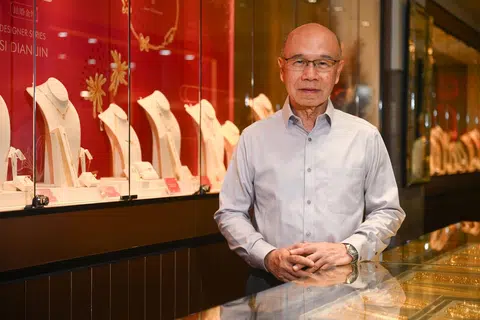
Even traditional Chinese bethrothal jewellery, known as Si Dian Jin, should be covetable in its own right. The idea is buyers can pick out individual pieces without the burden of buying the full set, which is the Chinese custom, Mr Ho says.
The result is bridal jewellery that feels minty fresh.
Like a slim 916 or 22K gold bracelet discreetly interrupted by a wavy accent. A pair of earrings has a bean-shaped stud and a curved, dangling stem that looks just a little waxy. It bears the likeness of a sapling.
One necklace follows a honeycomb pattern.
On Cheong has also dabbled in character goods, making Ang Ku Kueh Girl pendants in collaboration with the local creator.
Made in limited batches, sold-out designs are never reproduced - a move in step with mass production fatigue. Says Mr Ho: "It entices the younger generation to pay attention, rather than selling in bulk and they find other people wearing the same thing."
His younger clients typically shop in the $1,000 to $5,000 range.
More aggressive social media marketing goes without saying. In the last five years, the brand ramped up its presence on Instagram and TikTok. Mr Ho teases a new look for On Cheong's website, coming in three to six months.
For Poh Heng, the revamps have been countless. Says its executive director Eunice Lim: "In the last 25 years, we've changed our logo, tagline and shopfronts, and introduced new sub-brands."
The palette at its ubiquitous mall shops has in the last two years gone from dark to a comfortable beige. Bigger entrances make for a more open, friendly feel.
Like On Cheong, the look and feel of its products, powered by design, is ever the core. Poh Heng got a head start, launching a contemporary line in 2006.
Called ORO22, the 22K gold line is rendered in a "moonlight glow" - champagne-like and softer than traditional yellow. The shade appeals to young women, says Ms Lim.
Trend watching is essential, she adds. Poh Heng's designs have become lighter, sleeker and "more stackable" to suit younger buyers who prefer to layer their bling.
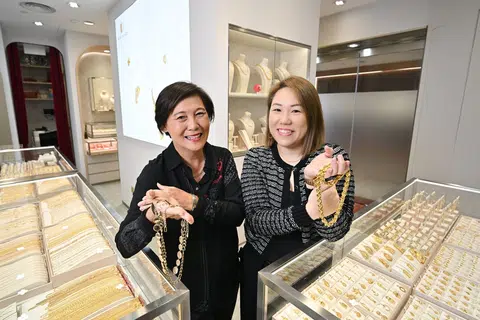
The retailer must be getting something right.
Sales to customers aged 25 to 35 have not taken a hit from the global gold jewellery slump, says Ms Lim. "It is older customers who take a wait and see attitude. Younger people are buying for everyday wear, they still buy what they can afford."
Typically, this means pieces from $800 to $2,000.
But as a heritage brand, it must walk the tightrope between modernity and history or risk throwing the baby out with the bathwater. Poh Heng marketing head Ezekiel Chin says: "A key part of our essence is credibility, the genuine quality of our gold, our quality control and service. It's trust we have built up over decades.
"Newer brands will always try to position themselves as a more modern option, but for us, we have to strike a balance."
Local retail chain and gold specialist Goldheart, established in 1977, has doubled down on this blend of old and new. Ms Patsy Loo, its spokeswoman, says the campaign for its 999 gold line, Gu Fa Jin, has been especially impactful among the younger generation.
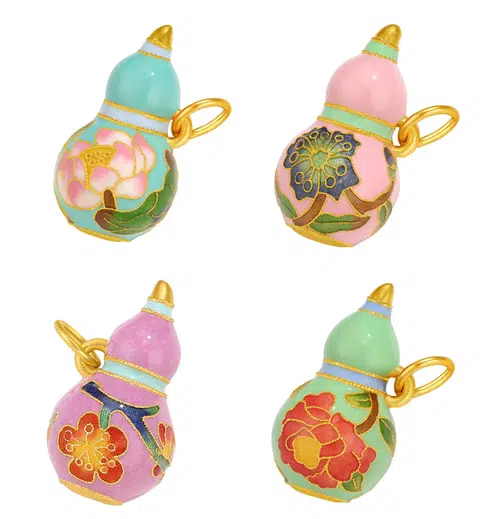
The collection puts a modern spin on traditional Chinese motifs like dragons, phoenixes and lotus flowers. One series comes in a set of 12 for each month of the year. Each pendant features a different flower, in pretty pastel tones.
The latest drop is accented with diamonds. Keeping pace with modern marketing, it will be launched at trendy members-only Mandala Club on Aug 21. Dress code: modern rebel.
Ms Loo says: "Gu Fa Jin resonates with customers who value heritage, symbolism and standout design. It has become a modern heirloom for the fashion forward."
Pretty young things
For 11-year-old young consumer favourite J&Co, gold was not the starting point. Ms Kwang began online with demi-fine jewellery in 2014, mostly 925 silver, with gold used only for plating.
At that price point, clientele trended young -18 to 30s.
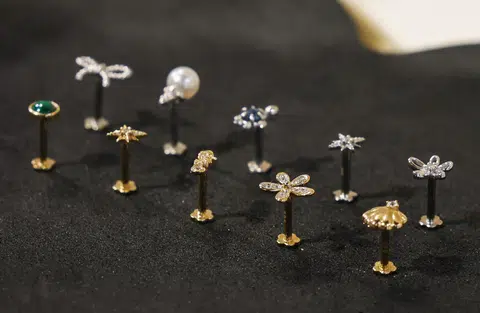
Solid 14K gold products came later, gingerly introduced in small batches to test the market from 2020, says Ms Kwang. The "pleasantly surprising" reception led to fuller collections, with prices between $109 and about $1,000.
The rewards have been stark. Pre-pandemic, gold made up 30 per cent of sales, with 70 per cent coming from demi-fine accessories. Today, the ratio has flipped to 60 per cent 14K gold and 40 per cent demi-fine.
These dividends are in line with the turn towards everyday luxury, she says. "There's been a clear shift post-pandemic. Customers are more intentional, they're choosing better quality items and placing higher value on long-term wearability."
Framing gold as fun and approachable in J&Co's marketing has been crucial, she adds. Design-wise, this means youthful themed collections like a candy shop series that featured paddlepop-shaped earrings, sweets motifs and girlish pastels ($109 to $499). The latest gold collection is ocean-themed, with seahorse- and turtle-shaped studs.
She says: "This positioning has resonated with younger customers and been instrumental to the growth of our gold sales."
What of consumers less set on or too cash-strapped for solid gold? One option is gold vermeil, with a sterling silver centre and an outer layer of gold five times thicker than average plating.
Malaysian accessories brand Wanderlust + Co, which has two Singapore stores, started its 14K vermeil collection with fewer than a dozen designs. It has expanded to make up 40 per cent of its present assortment, driven by strong demand, says founder Jenn Low.
It really comes back to attainable luxury. Amid a luxury slowdown, customers have been layering Wanderlust + Co's best-selling vermeil tennis bracelets ($219 to $285) with their Cartier and Van Cleef & Arpels arm candy, aware that a full-price stack would be very costly, she says.
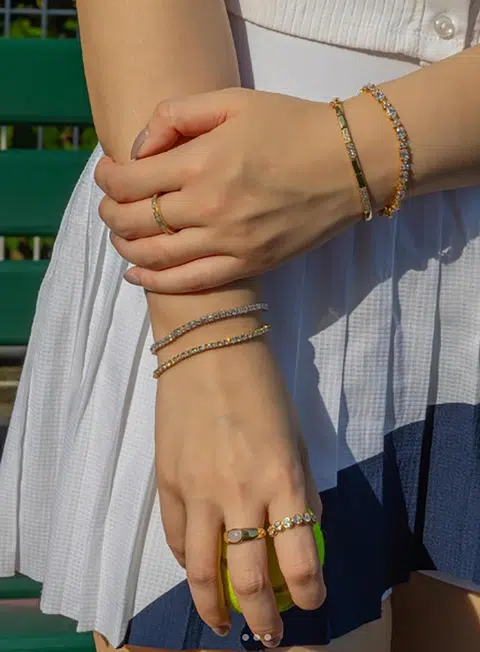
People are mixing high and low. Only, not too low. Quality is still important, she adds. "We're seeing a massive rise of that trend."
Across the board, jewellers and even regional wholesaler Sin Ter May point to wider market strain. But no one is fretting.
After all, a currency that has endured since 600BC cannot help but send up notions of jittering prices and trends, economic or aesthetic.
For those who have always bet on gold, its shine is forever.
Goldheart's Ms Loo boils down the appeal of its best-loved gold pieces to three things: "The enduring value of gold, designs that blend tradition with contemporary style, and the emotional meaning each piece carries."
Carmen Sin for The Straits Times